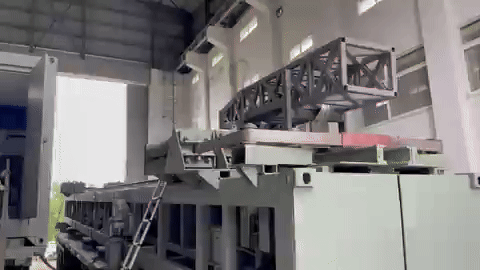SOURCE: AFI


The Defence Research and Development Organisation (DRDO) is on the verge of selecting an industry partner for the development of an Electro-Magnetic Launch System (EMALS). This advanced technology will be capable of launching projectiles at speeds exceeding Mach 6, revolutionizing how aircraft and other payloads are launched from naval platforms. The EMALS system, which will be compact and designed in a mobile configuration, marks a significant leap in the Indian Navy’s modernization efforts, especially for future aircraft carriers.
DRDO’s Research & Development Establishment (Engineers) [R&DE(E)], which is leading the project, has already made significant strides in developing a scaled technology demonstrator. This demonstrator has successfully launched payloads of up to 400 kg, equivalent to the weight of a UAV, over a short distance of 16 to 18 meters. This achievement proves the viability of the technology and sets the stage for further development.
With the technology demonstrator successfully tested, the focus now shifts towards scaling up these efforts to create a fully operational EMALS system for naval applications. A full-fledged EMALS will be a crucial component for future Indian aircraft carriers, offering enhanced capabilities compared to traditional steam-powered catapults.
The Electro-Magnetic Aircraft Launch System (EMALS) is an advanced system that uses electrical energy to launch aircraft from the deck of an aircraft carrier. Unlike steam catapults, EMALS provides several advantages:
Greater Launch Flexibility: EMALS allows for launching a broader range of aircraft, from smaller UAVs to heavy fighter jets, providing more operational flexibility for the carrier.
Increased Efficiency: EMALS can launch aircraft with higher precision, reducing the stress on the aircraft and the ship’s systems, while also increasing sortie rates.
Reduced Maintenance: Compared to traditional steam catapults, EMALS has fewer mechanical components, which translates to lower maintenance requirements and improved operational uptime.
These benefits make EMALS a game-changer for naval aviation and are essential for the next generation of aircraft carriers that will be capable of launching more advanced and heavier platforms, including unmanned aerial systems (UAS) and heavier fighter jets.
The development of EMALS hinges on two core technologies, both of which are being pioneered by R&DE(E):
- Linear Electric Machine Technology: This technology is the driving force behind the EMALS system, responsible for converting electrical energy into the mechanical force required to accelerate the aircraft along the catapult track. Linear electric machines offer precise control over the launch process, allowing for smoother acceleration and reducing the impact on both the aircraft and the launch system.
- Pulse Power Technology: This technology is critical for generating the massive electrical power required to launch an aircraft at high speeds. Pulse power systems can deliver large bursts of energy in a short amount of time, providing the necessary power to propel the aircraft off the deck with the force needed to achieve takeoff velocity.
These two technologies will form the backbone of the EMALS system, ensuring that it can handle the demanding task of launching heavy aircraft with both power and precision. The successful implementation of these technologies will not only enhance the operational capabilities of India’s future aircraft carriers but also place India among the leading nations capable of producing such cutting-edge naval systems.
As India plans to expand its naval capabilities with more advanced aircraft carriers, the development of EMALS becomes critical. Unlike steam catapult systems, which have been a staple on older carriers, EMALS will offer the Indian Navy a technological edge by allowing the launch of more versatile and heavier aircraft, increasing the carrier’s overall combat capability. Additionally, the compact and mobile configuration of EMALS opens up possibilities for its use on other platforms beyond aircraft carriers, such as mobile launchers for various payloads, including missiles and UAVs.